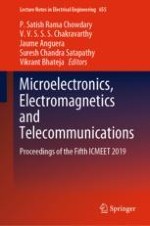2021 | OriginalPaper | Chapter
TEC Variation Analysis During Near Peak Solar Year Activity Over Indian Subcontinent
Authors : Bharati Bidikar, Rajkumar Goswami, G. Sasibhushana Rao, Ch. Babji Prasad
Published in: Microelectronics, Electromagnetics and Telecommunications
Publisher: Springer Singapore
Activate our intelligent search to find suitable subject content or patents.
Select sections of text to find matching patents with Artificial Intelligence. powered by
Select sections of text to find additional relevant content using AI-assisted search. powered by
